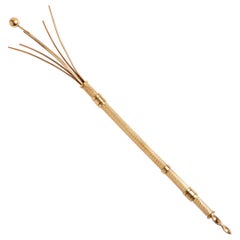Champagne Twizzle
Recent Sales
Telescopic Champagne Twizzle Stick with Cigar Piercer 9 Carat Yellow Gold
Located in Canterbury, England
delighted to present the following:
Popular in the roaring '20s and 1930s, a champagne swizzle stick was
Category
Mid-20th Century Barware
Materials
Yellow Gold
Get Updated with New Arrivals
Save "Champagne Twizzle", and we’ll notify you when there are new listings in this category.
More Ways To Browse
Olga Finzi
Owls Jade Pendant
Pair Victorian Bangles
Paisleys Antique Jewellery
Paloma Picasso Hammered Ring Tiffany
Paloma Picasso Moon
Panetta Brooch
Paspaley Necklace
Pasquale Bruni Floral
Pasquale Bruni On Sale
Paste Starburst
Patek Gondolo Pocket Watch
Patek Philippe 1910
Patek Philippe Cie Geneve Pocket Watch
Patek Philippe Diamond Earrings
Patek Philippe Geneve White Face
Patek Philippe Gondolo And Labouriau
Patek Philippe Ladies Pocket Watch
